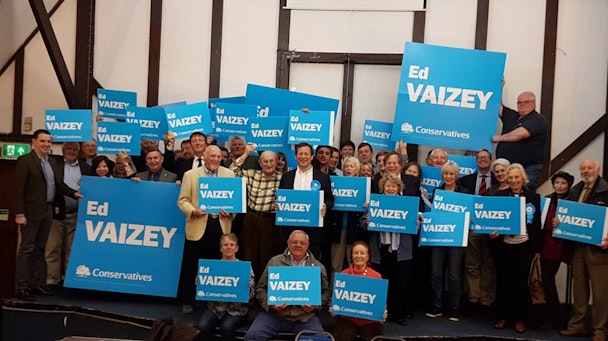Ed Vaizey: Local election campaigning hasn’t changed in 100 years – but it’s still effective
US elections are the most time-consuming and expensive in the world. The presidential campaign, preceded as it is by the race for the nomination, lasts two years. And when that’s not dominating, there are the mid-terms…

Local campaigning: Quaint, but important
Numerous candidates spend billions of dollars on mail shots, social media and TV advertising. I wonder if there is a study out there which shows what impact election spending has had on television networks’ bottom line – staving off the inevitable dominance of digital by many years.
UK elections are far more sedate affairs. I think it is a blessing that political parties are banned form advertising on television and radio. Thankfully, there seems to be no desire to change this happy state of affairs. The national election campaign costs the parties something like £20m apiece, a fraction of the costs of campaigns in other countries. Most of that money goes on mailshots and billboards, and increasingly, of course, on social media.
It’s difficult to pinpoint which efforts make the biggest impact. I’ve little doubt that television news probably plays the biggest role, which is why the parties get so het up if they perceive any bias. I also have little doubt that many voters make up their mind who to vote for long before an election is called – even if they don’t realise it. It’s also true that most voters will be mainly influenced by the quality of a leader, the state of the party, and the overall message, rather than a specific policy.
Having said that, local campaigning makes a difference. The national campaign goes on above our heads. We see it on the news, or in our constituency if we are lucky enough to get a visit from a top politician. We might see a poster, or even a newspaper advert, but we won’t have had any say in why or where it was chosen. As far as the national social media campaign is concerned, we will play our part in retweeting, but won’t have an input in the overall approach.
Local campaigning remains pretty much the same it was a hundred years ago. It is quaint, but it is important and can be effective. It’s as different from the national campaign as a drone strike is from a traditional yomp to a target. (Politicians are fond of military metaphors – elections are a “battle”, activists are “troops”.)
Again, thankfully, there is a spending limit of a few thousand pounds, so things don’t get too out of hand.
Posters play a part – there is always a poster war, where you try to outdo your opponent by getting as many up in prominent locations as possible. These are posters, on stakes, in gardens and fields, by the way – not huge billboards. Having more posters won’t necessarily win more votes – the primary aim seems to be to demoralise the opposition and boost your own morale. And it can be dispiriting to visit an area where the other side’s colours are on prominent display.
Then there is the election address – increasingly based on a national template in which you insert your own local content. Election rules allow every candidate one free mailshot, which they don’t have to pay for. Many candidates will also print supplementary leaflets, almost all of which will have local content. How many of your voters read and study this is anyone’s guess. But like posters, one of the primary aims is to increase your visibility and brand awareness.
All of this is important – but the most effective tool of all, is of course, canvassing or door knocking. Trudging the streets with your troops, knocking on doors, asking people how they will vote, trying to persuade the undecided and finding out where your supporters are so you can remind them to get out on election day. It still amazes me that in the 21st century, we do this with a pen and a piece of paper – with the results inputted manually at the end of the day. The market is ripe for a digital service that allows campaigners to input data digitally in real time, and one that can call up different messages depending on whether the person who answers the door is a student or a pensioner.
Not much has changed in the practical mechanics of an election campaign, from national photo opps to local door knocking. There is no lucrative pot of gold for communications professionals, though local and national newspapers, direct marketeers, outdoor advertisers and now huge US tech giants do benefit a bit.
What has changed is below the surface – the increasing use of data by all parties to target those most likely to vote for them. There is increasing talk of specific regulation to cover data use during an election – and there may also be regulation covering advertising on social media. And maybe that will affect the local election campaign. Data could start to dictate who you ask to put up a poster, whose letter box gets your leaflet, and on whose door you knock. Then elections could catch up with the 21st century.

